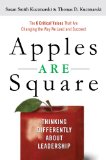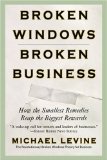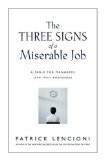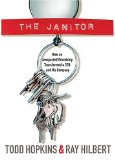 Made to Stick: Why Some Ideas Survive and Others Die
Made to Stick: Why Some Ideas Survive and Others Die
by Chip Heath and Dan Heath
Here’s another book that walks the talk by grabbing you at the book shelf before you even view a single page. The bright orange/gold cover catches your eye and directs you to five key elements on the cover alone.
- Bold color
- Catchy title
- Intriguing subtitle that peaks your curiosity
- Authored by brothers which is rare
- At first glance you would swear there was an authentic piece of wrinkled duct tape slapped across the cover of the book. It’s not a photo, you can feel the ridges.
Why are these things so important? They tell you that the authors have accomplished more on their book cover alone than many others can claim within hundreds of pages. It tells you that they know what they’re talking about and they practice what they preach. Of course, you’ll continue to explore further. And I can promise you that you’re going to discover even greater value within the text.
This book has taken a few shots from critics as being nothing more than “Advertising 101.” While the content may very well prove those critics to be correct, I can assure you that the tips, tools, strategies, research, case studies, and principles have been expertly repackaged in such a way as they will “stick” with readers and prove extremely beneficial in the future.
In what will certainly become a classic, the brothers Heath—Chip, a professor at Stanford’s business school, and Dan, a teacher and textbook publisher—offer an entertaining, practical guide to effective communication. Drawing extensively on psychosocial studies on memory, emotion and motivation, their study is couched in terms of “stickiness”—that is, the art of making ideas unforgettable.
At one time or another, we all have a message we hope will “stick” with our targeted audience. It doesn’t matter if we’re selling products, services, ideas, organizations, locations, change, theories, or any one of dozens of other possibilities. It all boils down to how well we communicate our message. The authors prove this point at they share so many examples that will immediately trigger your memory and result in a mental “ah-ha!”
- They’ll answer the question of why certain commercials “stick” in your mind forever while others are quickly forgotten.
- They’ll explain how President Kennedy’s stirring call to “land a man on the moon and return him safely to the earth” within a decade “stuck” with so many citizens from coast to coast.
- You’ll learn the inside story of Subway’s Jared campaign―quite a dramatic behind-the-scenes story besides being a near-perfect example of storytelling in marketing.
- You’ll hear the gruesome urban legend about a man who succumbs to a barroom flirtation only to wake up in a tub of ice, victim of an organ-harvesting ring. What makes such stories memorable and ensures their spread around the globe?
The authors credit six key principles and illustrate each with a host of stories:
simplicity
unexpectedness
concreteness
credibility
emotions
stories.
(Please note that the initial letters spell out “success”—well, almost.)
Although these six elements seem like common sense, they are woefully under-applied in today’s business communication. We see daily examples of this fact in most every industry.
Throughout the book, sidebars show how bland messages can be made intriguing. The book is a fast-read peppered with exercises to test the techniques proposed. Some examples act as pop quizzes and engage readers in moments of self-reflection.
It’s not often that a business book is well-written, well-organized, and drives home a critical message. Made to Stick should be required reading for executives who need to get their message across. If you are someone who needs to persuade, lead, or just communicate, you owe it to yourself to buy this book. It’s well researched, easy to read and hard to forget.
(This book review was originally published in 2008 as one of the Top 10 Books – Edition 17.)

 Apples Are Square: Thinking Differently About Leadership
Apples Are Square: Thinking Differently About Leadership Broken Windows, Broken Business: How the Smallest Remedies Reap the Biggest Rewards
Broken Windows, Broken Business: How the Smallest Remedies Reap the Biggest Rewards The Three Signs of a Miserable Job: A Fable for Managers (And Their Employees)
The Three Signs of a Miserable Job: A Fable for Managers (And Their Employees) Pour Your Heart Into It: How Starbucks Built a Company One Cup at a Time
Pour Your Heart Into It: How Starbucks Built a Company One Cup at a Time Juggling Elephants: An Easier Way to Get Your Most Important Things Done-Now!
Juggling Elephants: An Easier Way to Get Your Most Important Things Done-Now! The Janitor: How an Unexpected Friendship Transformed a CEO and His Company
The Janitor: How an Unexpected Friendship Transformed a CEO and His Company The Key: Celebrated People Unlock Their Secrets to Life
The Key: Celebrated People Unlock Their Secrets to Life Acres of Diamonds: All Good Things Are Possible, Right Where You Are, and Now!
Acres of Diamonds: All Good Things Are Possible, Right Where You Are, and Now! The Invisible Employee: Realizing the Hidden Potential in Everyone
The Invisible Employee: Realizing the Hidden Potential in Everyone